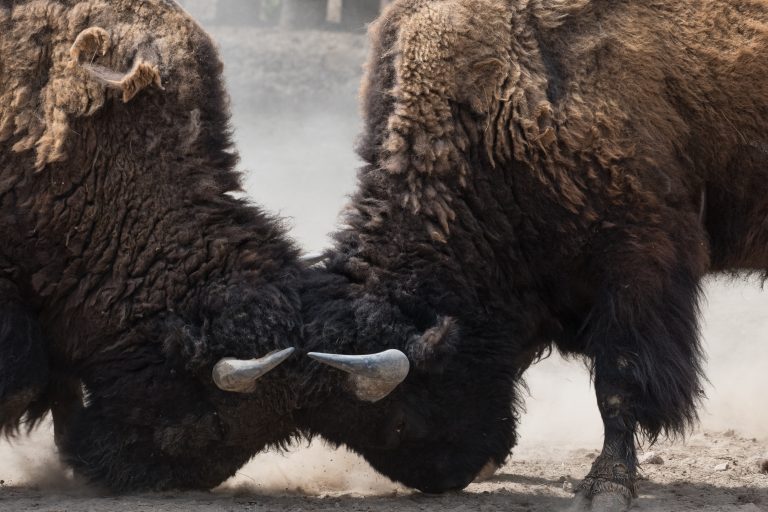How to Do Karate Belts: A Comprehensive Guide
Karate is a Japanese martial art that originated in Okinawa. It involves striking, blocking, and grappling techniques and is known for improving physical fitness, coordination, and mental discipline. One of the key ways to measure progress in karate is through the belt system. Belts signify a student’s level of proficiency and are a source of pride for practitioners. In this guide, we’ll walk you through everything you need to know to achieve your karate belts.
The Belt System
The belt system in karate is divided into ranks, with each rank represented by a different colored belt. In most styles of karate, the belt order is as follows:
– White
– Yellow
– Orange
– Green
– Blue
– Purple
– Brown
– Black
Some schools may have additional colors or variations on this system. It’s important to check with your instructor to see what the specific requirements are for your school.
Preparing for Your Belt Test
In order to progress to the next rank, you’ll need to take a belt test. This test will typically involve a demonstration of your skills, knowledge, and technique. Here are some tips to help you prepare for your test:
Practice Regularly
Karate requires consistent training to master the techniques and movements. Make sure that you’re training regularly and practicing the techniques you’ll need to demonstrate for your belt test.
Study the Requirements
Each rank has specific requirements that you’ll need to meet in order to progress to the next level. Make sure that you’re familiar with these requirements and are practicing them regularly.
Know the Terminologies
Karate has its own set of terminologies that you’ll need to be familiar with. Make sure that you’re studying and practicing these terms so that you can communicate effectively with your instructor and other students.
Attend Classes Regularly
Attending classes regularly is important for consistent training and also for keeping up with any changes to the requirements. Make sure that you’re attending classes regularly and taking advantage of any extra training opportunities that may be available.
What to Expect During Your Belt Test
Your belt test will typically involve a demonstration of your skills and knowledge. Here are some common elements that you may expect during your belt test:
Kihon (Basics)
This will involve demonstrating basic techniques such as punches, kicks, and blocks.
Kata (Forms)
You’ll need to demonstrate a kata, which is a set sequence of movements. The kata will increase in complexity as you progress through the ranks.
Kumite (Sparring)
You may also be required to demonstrate kumite, which is sparring with a partner. Kumite will also increase in complexity as you progress through the ranks.
Written Test
You may also be required to take a written test to demonstrate your understanding of karate history, techniques, and terminologies.
Tips for Passing Your Belt Test
Passing your belt test requires more than just mastering the techniques. Here are some additional tips to help you succeed:
Confidence
Present yourself with confidence and believe in your abilities. This will help you perform well and demonstrate your techniques effectively.
Focus
Stay focused and present during your belt test. Avoid getting distracted or letting nerves get the best of you.
Physical Fitness
Karate requires physical fitness, so make sure that you’re in good shape and ready to perform.
Proper Attire
Make sure that you’re wearing the proper attire for your test. This typically involves a gi (karate uniform) and a colored belt that corresponds to your current rank.
How to Do Karate Belt
Introduction
Karate is a martial art that originated in Okinawa, Japan. It is based on the techniques of punching, kicking, and striking, and is typically practiced with a partner or solo. Karate is also known for its belt system, which serves as a measure of an individual’s progress in the art. This article will provide answers to some of the most frequently asked questions about how to do a karate belt.
What is the Karate Belt System?
The karate belt system is a way of measuring progress in the art of karate through a series of colored belts. The belt color typically starts at white and goes up to black. As a karate student progresses, they earn higher belt rankings.
How Do I Progress Through the Belt System?
To progress through the belt system, a karate student must meet certain requirements in order to demonstrate their knowledge and understanding of the art. These requirements can vary depending on the karate school, but typically include:
Attendance Requirements
Many karate schools require a certain amount of attendance before students can test for the next belt. This is to ensure that students put in the required effort and time to learn the necessary techniques.
Technique Requirements
Students must also demonstrate proficiency in various techniques, such as basic strikes, blocks, and kicks. As the belts become more advanced, the requirements can include more complex techniques.
Kata Requirements
Kata is a series of movements that simulate a fight against one or more attackers. Students must demonstrate proficiency in performing various kata in order to progress through the belt system.
What Do the Karate Belt Colors Mean?
The karate belt colors typically follow this order:
- White
- Yellow
- Orange
- Green
- Blue
- Purple
- Brown
- Black
Each belt color represents a level of proficiency in the art. White is typically the starting belt for beginners and black is the highest and most prestigious belt rank in karate.
How Do I Tie My Karate Belt?
Tying a karate belt is an important skill for any karate student to learn. Follow these steps to tie your karate belt:
- Wrap the belt around your waist, with the ends of the belt hanging down evenly in front of you.
- Take the left end of the belt and lay it over the right end, making an X shape at your waist.
- Bring the left end of the belt up and over the right end, tucking it under both layers of the belt at your waist. The left end should now be on top of the right end.
- Bring the left end of the belt down and over the right end, wrapping it behind both layers of the belt at your waist.
- Tuck the left end of the belt under both layers of the belt at your waist. Make sure both ends of the belt are hanging down evenly.
- Adjust the knot so that it is centered on your waist.
## The Step-by-Step Guide on How to Tie Your Karate Belt
Karate is a martial art developed in Okinawa, Japan, and it has been practiced for centuries. One of the essential components of Karate practice is tying the Karate belt, also known as ‚obi,‘ which symbolizes your progress and rank in the martial art. In this blog post, we will provide a step-by-step guide on how to tie your Karate belt correctly.
### Step 1: Place the Belt Around Your Waist
Start by placing the center of the Karate belt on your belly button, and wrap it around your waist, with the ends hanging loose at your back. Ensure that one end of the belt is longer than the other, and it should be hanging on your left-hand side.
### Step 2: Cross the Longer End Over the Shorter End
Take the longer end of the belt and cross it over the shorter end at the level of your belly button. Ensure that the longer end of the belt is still hanging on your left-hand side.
### Step 3: Tuck the Longer End of the Belt Underneath the Shorter End
After crossing the longer end of the belt over the shorter end, tuck it underneath the shorter end and pull it through the gap created between the belt and your waist. Ensure that the belt is lying flat against your waist and not twisted.
### Step 4: Establish the Tightness of the Karate Belt
Now that you have the belt in place, tighten it by pulling the two ends of the belt firmly. Ensure that the belt is snug, but not too tight, to allow proper breathing and movement during your Karate practice.
### Step 5: Cross the Longer End of the Belt Over the Shorter End Again
Take the longer end of the belt and cross it over the shorter end again, but this time, do it further up your stomach, between your chest and your waist.
### Step 6: Tuck the Longer End of the Belt Underneath the Belt and Over the Shorter End
After crossing the longer end of the belt over the shorter end, tuck it underneath the belt and over the shorter end. Then, pull it through the gap created between the belt and your waist.
### Step 7: Tighten the Belt Again
Repeat step four to tighten the Karate belt, ensuring that it is snug, but not too tight. Make any necessary adjustments to the belt to ensure that it is secure and in the middle of your waist.
### Step 8: Tie a Knot with the Longer End of the Belt
Take the longer end of the belt and tie a knot around the shorter end of the belt. Ensure that the knot is centered on your waist and that the ends of the knot on both sides are even.
### Step 9: Tuck the Other End of the Belt Underneath the Belt
After you have tied the knot, take the shorter end of the belt and tuck it underneath the Karate belt, ensuring that it is neat and tidy.
### Step 10: Adjust the Belt
Finally, adjust the Karate belt again to ensure that it is stable, snug, and secure around your waist. The knot should be centered, and the two ends of the belt should be of equal length.
Congratulations! You have tied your Karate belt correctly.
### Tips for Tying Your Karate Belt
– Always ensure that the belt is flat and not twisted when tying it.
– The belt should be snug, but not too tight, to allow for proper breathing and movement during your Karate practice.
– Keep practicing to become more familiar and efficient in tying your Karate belt.
– Remember, the belt symbolizes your progress and rank in the martial art, so treat it with respect.
– If you are unsure about tying your Karate belt, ask your instructor for guidance.
### Conclusion
Tying your Karate belt correctly is an essential aspect of Karate practice. By following the ten easy-to-follow steps outlined in this guide, you can tie your Karate belt correctly and confidently. Remember, practice makes perfect. Keep practicing, and you will become more proficient in tying your belt, and you will progress in your Karate practice.
Inhaltsverzeichnis






